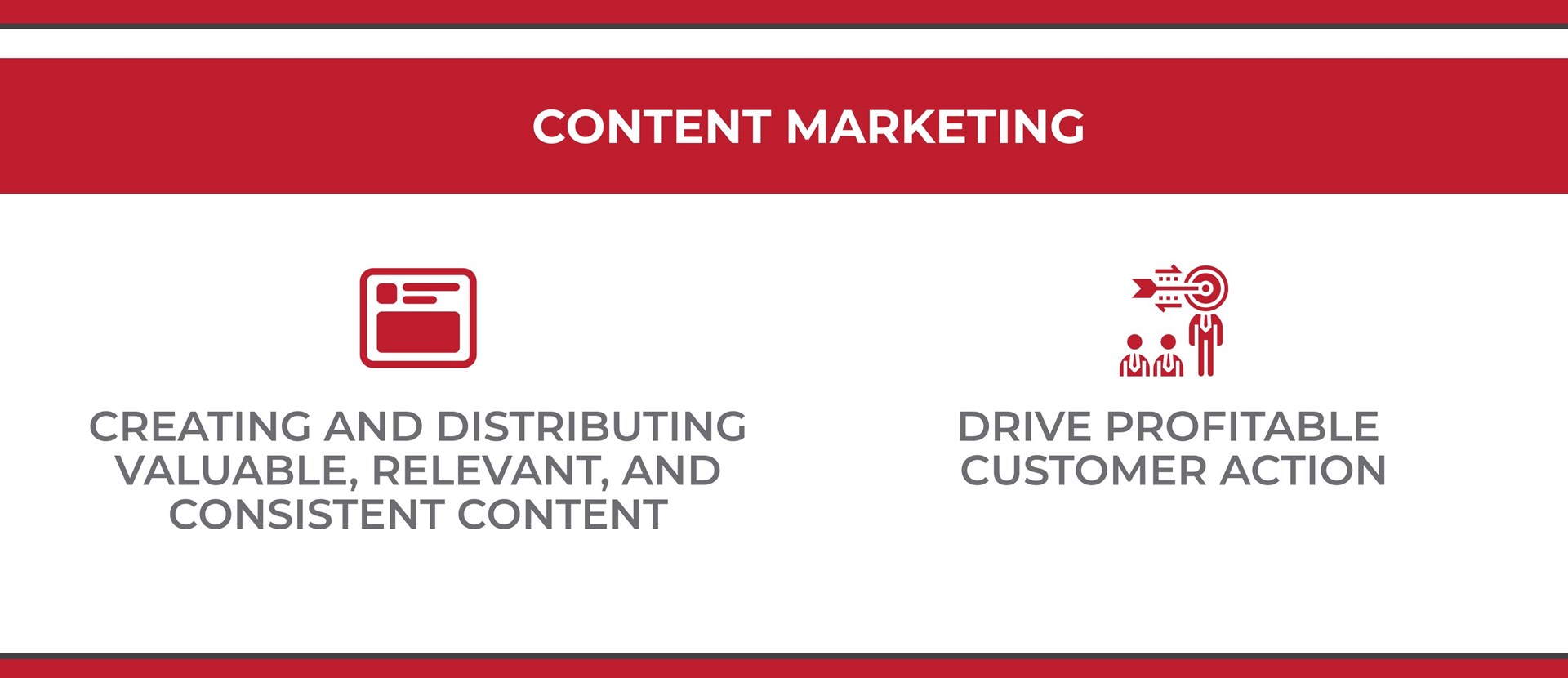A LOT of people (and AI bots like ChatGPT) are creating content daily. The question is no longer, “Can you create content?” It’s “Should you create content?”
Here’s the problem. Even though 82% of marketers are actively investing in content marketing, only 43% of B2B marketers have a documented content marketing strategy explaining why they’re creating content, their target audience, and how they will analyze the results.
Whether it’s your CEO, an in-house subject matter expert, or someone on your marketing team, content creators should understand and commit to all three of these best practices.

1. The Right Message
Whether the channel is your website, email, social media, or a speaking engagement, content marketing (by definition) is focused on creating and distributing valuable, relevant, and consistent content (to attract and retain a clearly defined audience–and, ultimately, to drive profitable customer action).
Let’s break down that definition.
Content must be valuable and relevant–not to us, the creators, but to the clearly defined audience we want to attract and retain.

The Content Sweet Spot
So, what does your target audience value? Who are you, and what you do?
Or do they value their job, their customers, their goals, and having the clarity they need to confidently make better decisions?
You’re sending the wrong message if your content is all about you. The right message helps your target audience do what they need to do better than they’re doing it now.
It’s educational. It’s relevant to their situation. It’s for them and with them in mind.
RC PRO-TIP: Discover Red Caffeine’s 6 Buckets for Endless Content Creation
Takeaway #1: The right message is audience-centric and intentional.
2. The Right Audience
If the right message is audience-centric, it must reach the right audience. The right message delivered to the wrong audience fails.
What defines “the right audience”?
The right audience is defined in your buyer personas, which should include a research-based understanding of their decision-making motivations, key criteria, and their buying process. Decisions with significant cost on the line may have several people involved in the process. The right audience is involved in the decision-making process (Ex: the purchaser, the buying committee, the end user-influencer)
The right audience has a need it wants to fill that you can address
RC PRO-TIP: Audit your audiences at least once a year. Include your customers, prospects, website visitors, email subscribers, and social media followers.
3. The Right Time & Place
The right message delivered to the right person at the wrong time or in the wrong place fails.
What makes now the right time and here the right place?
To your sales team, “now” is always the right time. But if your message reaches your audience when they aren’t yet ready to buy, have already made their purchase, or don’t have a budget, it fails. Timing isn’t everything, but it is important to understand where people are in their journey before delivering tone-deaf content that misses its mark.
Similarly, the right place is wherever the audience is engaged. If your audience is middle-aged purchasing agents in the automotive industry who need to ensure reliable delivery and quality of parts in order to keep their job—TikTok is probably not where they’re paying attention, and 3 AM on a Sunday is probably not when they’re engaged.
If you want to maximize your marketing and advertising budget, channel planning and customer journeys should be informed by research and tested before launching any campaign.
3 ½. How You Define Content Success
At the end of the day, the way you define success is a key factor in your marketing strategy.
It’s unrealistic to expect you to drive sales and revenue if you aren’t following the three (and a half) best practices above.
Companies should not limit their content’s success in terms of hard numbers like leads, RFQs, customers, revenue, and certainly return on investment UNTIL they’ve implemented these best practices.
The causal attribution between any single piece of content and a buying decision at the end of a months-long customer journey is nearly impossible to identify. It would be like saying,
“That one article I read on Wednesday, February 8th at 11:15 AM is why I placed that $50,000 purchase order.”
Conclusion
What we can say definitively is that right now, most companies are NOT following each of these best practices. Right now, they are trying to secure an appointment or close a deal with every touchpoint. Instead, use the insights above to build a strong foundation and consistently put yourself in a better position to succeed with every piece of content you create.
When you do, this is what success looks like:
- We consistently deliver the right message.
- Our content addresses the right audiences.
- The channels we use reach our audience at the right time.
- We understand our audience’s needs and motivations.
- What we say makes us different matches what our audience believes makes us different.
- We understand what outcomes are realistic to expect.
- We evaluate and reassign appropriate resources to the channels and topics that data shows are most likely to meet those expectations.
- We reprioritize or eliminate ineffective channels.
To build a better content marketing strategy,
contact Dayna Kramer to start the conversation today.
If You Enjoyed This Article, Check Out These….
Join Thousands Of
Like-Minded Folks
Receive monthly business growth tips
and event invites right to your inbox.



